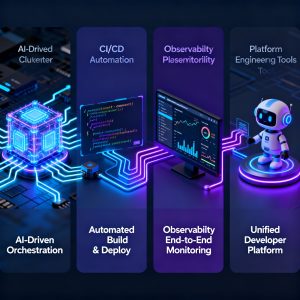Security remains one of the most critical — and often misunderstood — aspects of web development. As applications evolve with frameworks like Next.js, React, and Astro, developers face growing pressure to maintain speed without compromising protection. Between new exploits, fast‑evolving architectures, and rising compliance demands, developers often need a clear security foundation to follow.
That’s where OWASP — the Open Worldwide Application Security Project — steps in. It is a nonprofit organization dedicated to improving the safety of software worldwide by providing open‑source tools, education, and frameworks. Its most famous resource, the OWASP Top 10, lists the most common and severe vulnerabilities faced by developers today.
For 2025, the OWASP Top 10 continues to serve as a benchmark for secure coding. Whether using TypeScript, Python, or Node.js, mastering these security categories is crucial for every full‑stack professional. Let’s explore how each one affects modern applications.
Server‑Side Request Forgery (SSRF)
Server‑Side Request Forgery occurs when attackers manipulate a server into sending unauthorized requests — often to internal systems. This is especially dangerous because compromised requests use your server’s own permissions, potentially exposing private APIs and databases.
Example:
An application allows users to submit URLs for preview or summarization through an AI service. A malicious user replaces a valid URL with localhost:3000, causing the server to unknowingly fetch its own internal endpoints.
Prevention Tips:
- Always validate and sanitize URLs from user inputs.
- Block internal IP ranges (e.g., 127.0.0.1, 10.0.0.0/8).
- Use allowlists for trusted external sources.
Security Logging and Monitoring Failures
Logs are your first line of defense during an attack. When logging is incomplete, delayed, or unstructured, it becomes nearly impossible to trace incidents or prove compliance.
Developer Context:
Modern full‑stack frameworks like React Server Components shift logic toward the backend, demanding robust cloud‑native logging mechanisms such as OpenTelemetry, Sentry, or Datadog.
Best Practices:
- Log key application events (logins, payments, and data changes).
- Store logs centrally with restricted access.
- Set up automated alerts for irregular activities.
Software and Data Integrity Failures
Supply chain attacks remain one of the fastest‑growing risks in 2025. Compromised dependencies can inject malicious code directly into production.
How to Mitigate:
- Audit your dependencies using GitHub Dependabot, Snyk, or OWASP Dependency‑Check.
- Vet open‑source libraries carefully. Check commit history, contributor credibility, and version updates.
- Limit dependency privileges and remove unused packages regularly.
Identification and Authentication Failures
Weak authentication measures open the door to unauthorized access. Attackers exploit predictable passwords or lack of rate limits to perform brute‑force attacks.
Modern Defense:
Next.js and other frameworks enable edge middlewares to perform rate limiting or block suspicious IPs — long before a request ever reaches an API route.
Additional Recommendations:
- Use salted, one‑way hashed passwords (e.g., bcrypt, Argon2).
- Set up MFA wherever possible.
- Implement Web Application Firewalls (WAFs) for additional filtering — platforms like Vercel now offer built‑in solutions.
Vulnerable and Outdated Components
Running outdated libraries or frameworks exposes known vulnerabilities publicly documented in global CVE databases. Even well‑intentioned developers sometimes skip updates to avoid breaking changes — leaving critical loopholes unpatched.
OWASP Guidance:
Regularly scan dependencies for vulnerabilities and update them as part of your CI/CD pipeline. Automated scanners like Dependabot or OWASP Dependency‑Track simplify this process, keeping applications safe without slowing iterations.
Security Misconfiguration
Incorrect configuration of HTTP headers, API permissions, or CORS policies often leaves sensitive features exposed.
Example:
Forgetting to set the Permissions‑Policy header could allow malicious scripts to access a user’s camera or location.
Quick Wins:
- Use secure headers —
Content‑Security‑Policy,Permissions‑Policy, andStrict‑Transport‑Security. - Ensure production environments never expose stack traces or debug logs.
- Regularly verify your configurations against baseline templates (e.g., Next.js security defaults).
Insecure Design
A large number of breaches result from flawed architecture rather than specific code bugs. Vulnerabilities often originate from the design stage — not understanding data flows, applying inconsistent logic, or misusing frameworks.
Developers should design security into each phase of development, rather than bolting it on at the end. For frameworks such as Next.js, the distinction between client and server logic means some techniques (e.g., auth checks in layouts) may behave differently across contexts.
Expert Tip:
Follow official security guides such as How to Think About Security in Next.js and invest in periodic security training for technical teams.
Injection Attacks
Despite decades of awareness, injection vulnerabilities — from SQL and command line to JavaScript injection — still rank among the top threats in 2025.
Example:
Unsanitized user data injected into a query or rendered unescaped into the DOM can execute malicious scripts or alter database state.
Prevention Techniques:
- Avoid unsafe rendering functions (e.g.,
dangerouslySetInnerHTMLin React). - Always parameterize database queries.
- Validate every user input server‑side using libraries like Zod or Joi.
Cryptographic Failures
Mismanaging encryption keys or using weak hashing algorithms puts sensitive information like passwords at risk.
Best Practices:
- Use one‑way hashing for credentials rather than reversible encryption.
- Rotate keys regularly and store them outside application code using tools like AWS KMS or HashiCorp Vault.
- Adopt passwordless authentication or OAuth where feasible for added safety.
Example:
Hash emails and personal identifiers before saving them in databases so even admins cannot view actual user data.
Broken Access Control
Still reigning as the number one web vulnerability, Broken Access Control lets users view or modify resources they shouldn’t access. In API‑driven applications, these issues often arise from missing or misapplied authorization checks at the server level.
Mitigation Steps:
- Enforce Role‑Based (RBAC) or Attribute‑Based Access Control (ABAC).
- Avoid relying on client‑side checks or URL structures for authorization.
- Validate permissions server‑side for all API endpoints.
- Follow the principle of least privilege and test with automated security tools.
Example:
A bug allowing users to fetch private content by appending query parameters like ?RSC=1 can expose protected routes in modern frameworks like Next.js if access control isn’t properly validated.
Lessons for Full‑Stack Developers
From SSRF to Broken Access Control, the recurring theme is clear: vulnerabilities thrive where developers lack visibility or understanding of their systems.
To build secure full‑stack applications in 2025:
- Incorporate security in the design phase (shift‑left approach).
- Automate dependency scans and deploy continuous monitoring.
- Adopt a culture of peer code reviews and team‑based audits.
- Rely on OWASP‑guided frameworks and regularly review updated documentation.
OWASP’s Top 10 list isn’t simply a checklist — it’s a framework for continuous vigilance. By understanding these ten categories deeply, developers ensure that the dynamic architectures of React, Next.js, and even serverless platforms remain resilient against the next generation of cyber threats.
Read more such articles from our Newsletter here.



